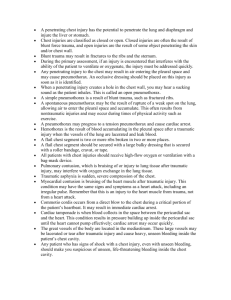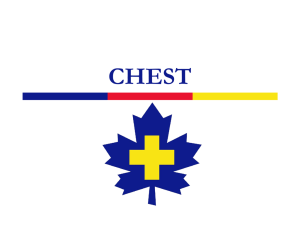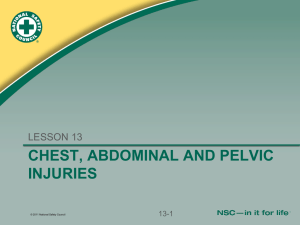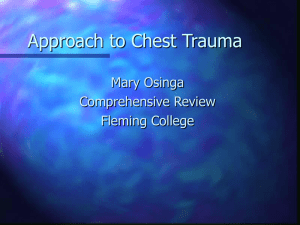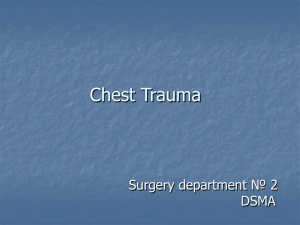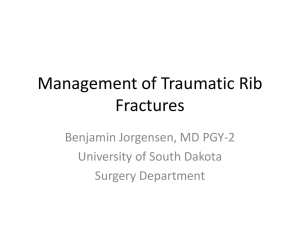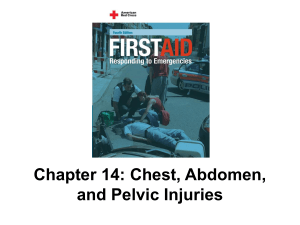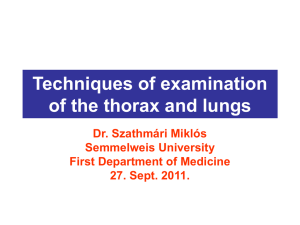Lesson 6: Chest I - Bsa
advertisement
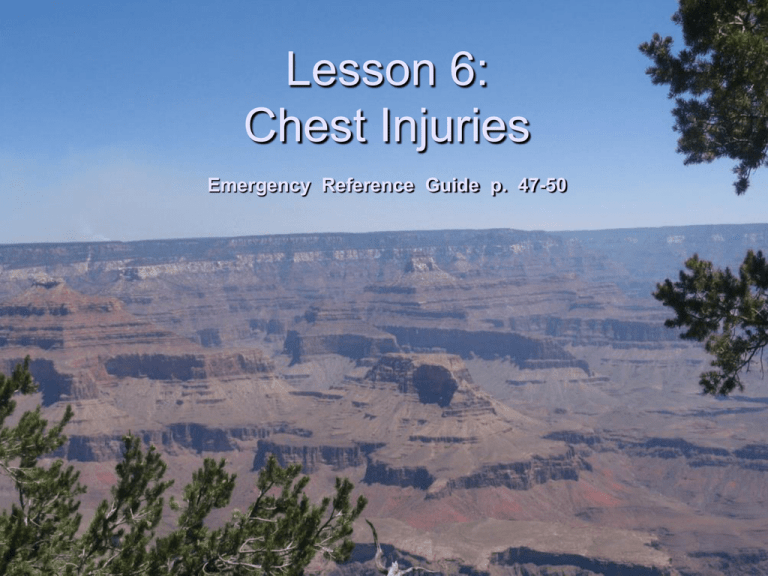
Lesson 6: Chest Injuries Emergency Reference Guide p. 47-50 Objectives • Demonstrate a field assessment of a person with a chest injury • Describe the emergency treatment and long term care of: – – – – – – Fractured rib/clavicle Pneumothorax Tension pneumothorax Fail Chest Sucking Chest Wound Describe when to evacuate SLOW vs. FAST Checking and Caring for Chest Injuries • What are Signs & Symptoms of a Chest injury? – Deformity, Open wounds, Tenderness, Swelling (DOTS) – Windpipe pushed to one side of neck – Abnormal breathing – Bleeding or holes with/without bubbles, bruising – Unusual noises like gurgling or air escaping – Abnormal chest rise Checking & Caring for Chest Injuries (cont’d.) • Signs & Symptoms (cont’d.) – Patient is guarding a particular area – While exerting some pressure with hands you • Hear cracking sounds • Feel/hear crumbling • Find depressions – Patient has point pain/tenderness along ribs or clavicle (aka collarbone) Chest Injuries Chest Injuries 6 Rib Injuries • What are the Signs & Symptoms? – Pain in the clavicle or rib area – Complaints of increased pain with deep breathing – Discoloration, bruising or swelling – Guarding the injury from being touched/moved – Specific point where pain is most intense Rib Injury Treatment • Protect simple fracture by: – Supporting arm on injured side with sling & swath – DO NOT band snugly around patient’s chest – Encourage patient to take regular deep breaths to keep lungs clear of fluid – Try padding area to increase comfort Rib Injury Care Lung Injuries • Lung injuries can lead to pneumothorax (air trapped in chest). – Leads to: • Difficulty breathing & rising anxiety • Pneumothorax can worsen until patient cannot breath adequately (i.e. tension pneumothorax) • Suspicion of pneumothorax requires immediate (FAST) evacuation • No treatment available in wilderness setting for a lung injury Flail Chest • Ribs broken in several places, free floating bones • Flail section moves in opposition to rest of chest • Not common, can be life-threatening, immediate evacuation necessary • May need to give rescue breaths • Applying bulky dressing may allow patient to breath easier. Do not wrap chest with tape Sucking Chest Wound • Characterized by open wound that bubbles & makes noises when breathing • Do not remove impaled objects. Immobilize & seal wound(s) • Apply Occlusive dressing – Apply Air barrier (i.e. plastic baggie, etc.) • One corner is left open to allow air to escape Guidelines for Evacuation • GO SLOW with suspected rib fracture. Patient may walk: – Must be evaluated by health care provider – Patient may have difficulty breathing • GO FAST & transport patient for: – – – – Increase difficulty breathing Flail chest Sucking chest wound Transport on side with injury or other position of comfort. Preventing Chest Injuries • Prevention is important, since no effective field treatment is available in field SHOUT OUT • What are some possible chest injuries you can anticipate in a Wilderness or remote location? • What are some smart ways to help prevent chest injuries? Questions? What else can be added to the First Aid Kit?

